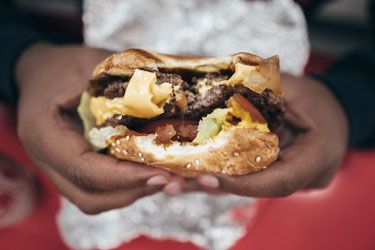Fast-food companies have ramped up their spending on TV ads that market high-calorie, low-nutritious foods to kids, with a focus on Black and Hispanic youth, a recent report finds.
Over a seven-year period, annual spending on fast-food ads increased by $400 million, totaling $5 billion in 2019, according to “Fast Food: Food Advertising to Children and Teens Score 2021,” released by the University of Connecticut’s Rudd Center for Food Policy and Obesity this summer. In 2019, youth were seeing more than two fast food TV ads per day.
More than a third of youth eat fast food on a given day, exposing them to high levels of sugar, fat and sodium, as well as high calories, which contribute to poor health and weight increase. Disparities in ads that target racial and ethnic youth are widening, the report said.
Between 2012 and 2019, the number of ads viewed by Hispanic preschoolers and children increased 2% and 7%, respectively. The fast-food industry spent $318 million to advertise on Spanish-language television in 2019, a 33% increase from 2012. Black preschoolers, children and teens viewed 75% more fast-food ads than their white counterparts.
“From a public health perspective, fast-food companies should stop marketing products that exacerbate the health crisis of poor diet and obesity-related diseases affecting young people and communities of color,” the report’s lead author, Jennifer Harris, PhD, MBA, told The Nation’s Health.
Fast-food companies advertise their unhealthiest offerings more often than their healthier options, the report said. Unhealthy meals tend to be regular menu items and value bundles. Television ads for unhealthy meals were more likely to appear with programming for a mostly Black audience, the report found. No healthy menu options were advertised on Spanish-language television in 2019.
“For many reasons unrelated to income, unhealthy menu items remain the most popular items at fast-food restaurants with most customers,” Harris said. “If fast-food restaurants truly want to sell more healthier menu items, they must do much more to introduce and extensively promote highly palatable items that are also more nutritious.
The report found that out of the 274 fast-food restaurants that advertised in 2019, six restaurants — McDonald’s, Domino’s, Burger King, Taco Bell, Sonic and Little Caesars — generated 55% of all fast-food ads viewed by children and teens.
“If these few companies chose to reduce their marketing of nutritionally poor products, especially marketing targeted to children, teens and Black and Hispanic communities, it would have a substantial positive impact on young people’s diets and long-term health,” Harris said.
Fast-food restaurants should discontinue disproportionately marketing unhealthy items to Hispanic and Black youth, the report recommended. Governments should enact politics that require nutrition standards for kids’ meals, limit fast-food promotion for children and teens, and eliminate marketing of unhealthy options as a tax-deductible corporate expense, report authors said.
“Despite their public relations campaigns, fast-food restaurants have yet to implement real improvements in the nutrition quality of their products or invest their marketing budgets to promote existing healthier items,” Harris said. “Continued pressure from consumers, public health advocates and policymakers is needed to force fast-food restaurants to effectively address the negative long-term effects of their products on public health.”
The report also contains a social media supplement, which documents fast-food social media campaigns that target teens. Twenty-three out of the 27 top fast-food advertisers promote on TikTok, a platform used widely by teens, the report found.
Photo by Marcel Heil, courtesy Unsplash